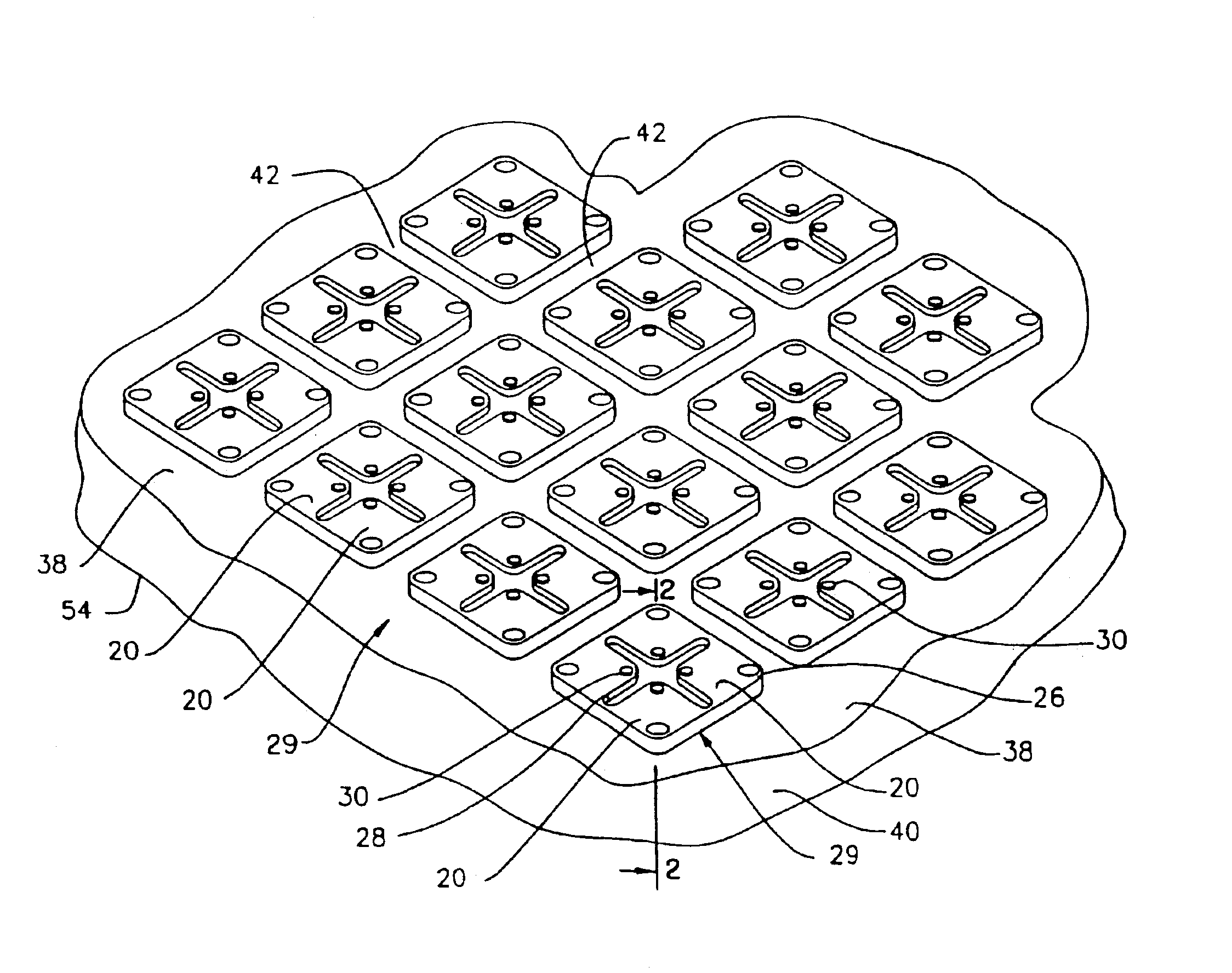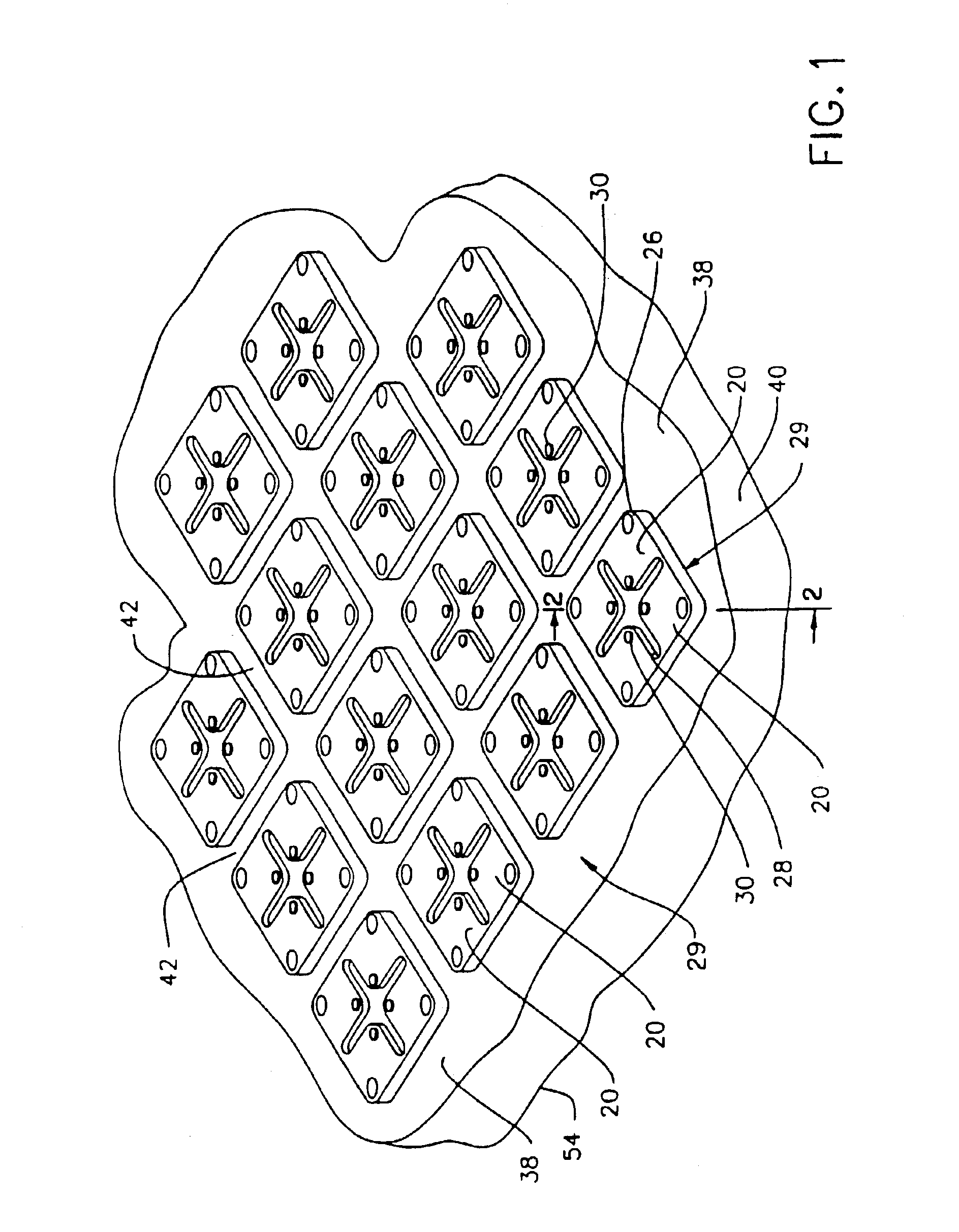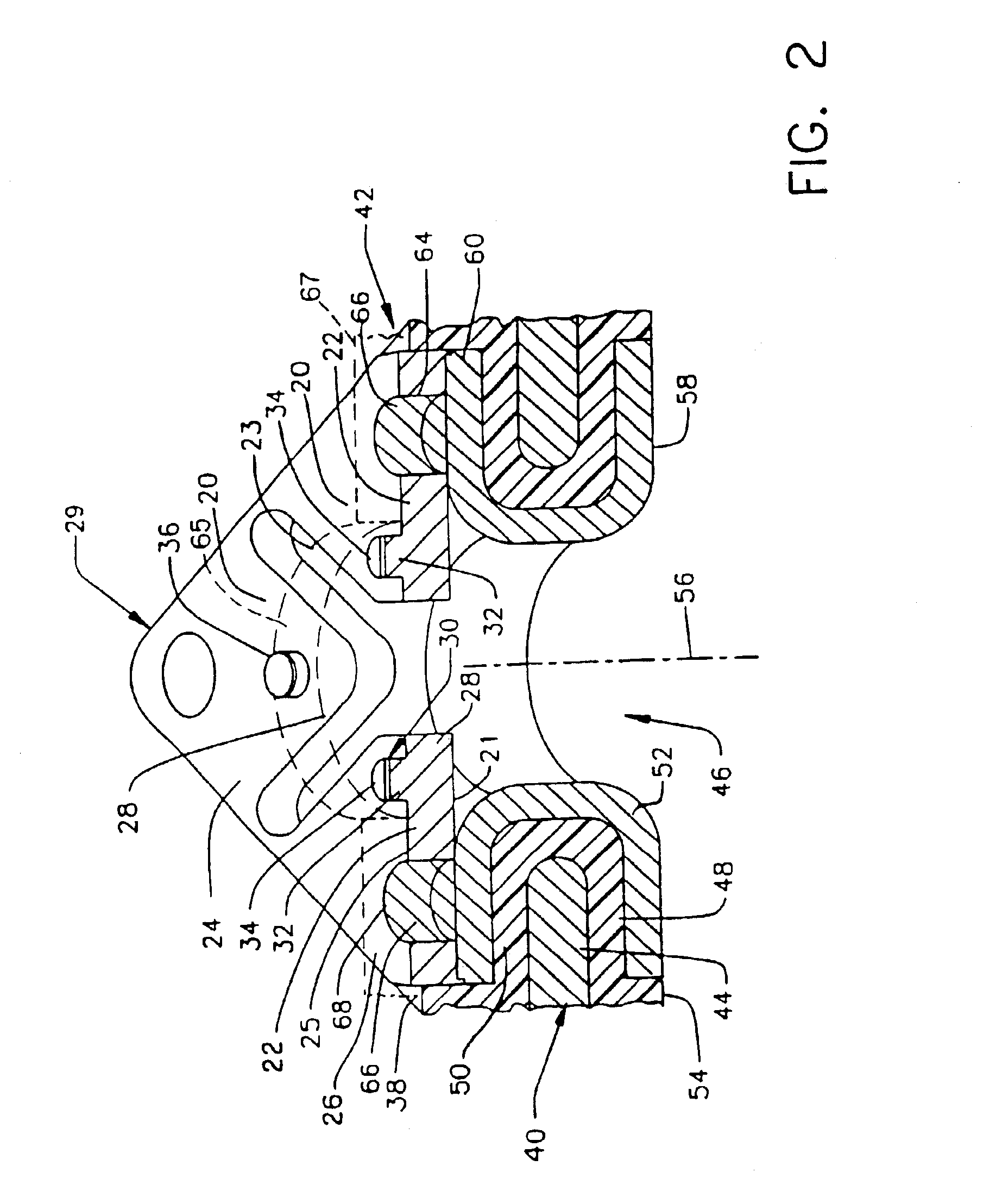Method of making an electronic contact
a technology of electronic contact and contact plate, which is applied in the field of contact, can solve the problems of thermal cycling strain on the connection, varying degrees of misalignment, and interference with the connection, and achieve the effects of reliable contact, reliable bonding, and effective scraping action
- Summary
- Abstract
- Description
- Claims
- Application Information
AI Technical Summary
Benefits of technology
Problems solved by technology
Method used
Image
Examples
Embodiment Construction
[0038]A connector according to one embodiment of the invention includes a plurality of independent, electrical contact ends 29. Each contact unit includes four contacts 20. Each contact 20 includes a small metallic tab incorporating a base layer 22 (FIG. 2) defining an upwardly facing base surface 24. The base portion of each contact desirably is formed from a resilient metal selected from the group consisting of copper, copper-bearing alloys, stainless steel and nickel. Beryllium copper is particularly preferred. The base portion desirably may be between about 10 and about 25 microns thick. A layer 25 of an etch metal such as nickel used in the contact formation process as further described below may be disposed on base surface 24. Layer 25 desirably is between about 0.5 and 2.0 microns thick. Each such tab is joined to a generally square, ring-like anchor portion 26 integral with the tab. Each tab has a tip 28 at the end of the tab remote from the anchor portion.
[0039]Four tabs ex...
PUM
| Property | Measurement | Unit |
|---|---|---|
| center-to-center distance | aaaaa | aaaaa |
| center-to-center distance | aaaaa | aaaaa |
| peak-to-peak distance | aaaaa | aaaaa |
Abstract
Description
Claims
Application Information
 Login to View More
Login to View More - R&D
- Intellectual Property
- Life Sciences
- Materials
- Tech Scout
- Unparalleled Data Quality
- Higher Quality Content
- 60% Fewer Hallucinations
Browse by: Latest US Patents, China's latest patents, Technical Efficacy Thesaurus, Application Domain, Technology Topic, Popular Technical Reports.
© 2025 PatSnap. All rights reserved.Legal|Privacy policy|Modern Slavery Act Transparency Statement|Sitemap|About US| Contact US: help@patsnap.com



